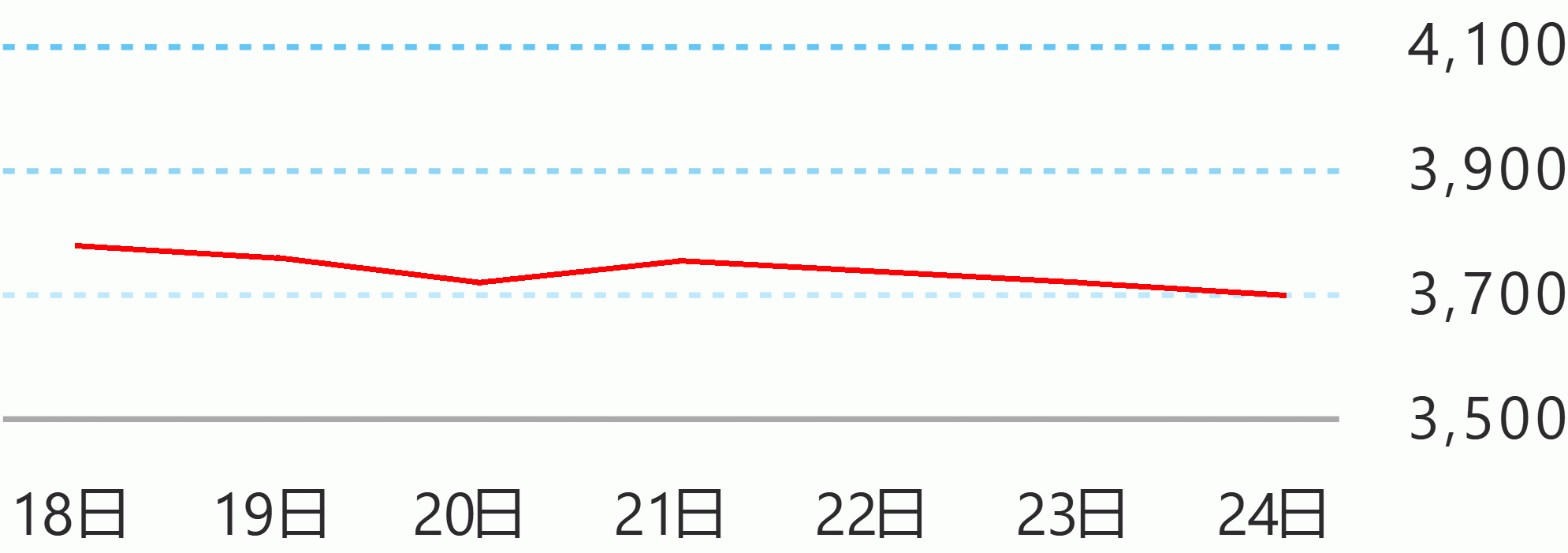Total external debt (EDT) stood at US$130.18 billion as of end-June 2024, up by US$1.49 billion (or 1.2 percent) from the US$128.69 billion level as of end-March 2024. Despite the increase in the debt stock, the external debt ratio (EDT expressed as a percentage of gross domestic product) remains at a prudent level, slightly improving to 28.9 percent from 29.0 percent last quarter.
Other key external debt indicators also remained at comfortable levels. Gross international reserves (GIR) stood at US$105.19 billion as of end-June 2024 and represented 3.84 times cover for short-term (ST) debt based on the remaining maturity concept.[1]/ The debt service ratio (DSR), which relates principal and interest payments (debt service burden) to exports of goods and receipts from services and primary income, improved to 9.5 percent from 11.1 percent for the same period last year due to lower debt service payments in the first half of 2024. The DSR and the GIR cover for ST debt are measures of the adequacy of the country’s foreign exchange (FX) resources to meet maturing obligations.
External Debt
The rise in the debt level was primarily driven by net availments aggregating US$1.50 billion as the National Government (NG) raised US$2.61 billion from: (a) the issuance of its US$2.00 billion Dual Tranche Fixed Rate Global Bonds under its Sustainable Finance Framework; and (b) US$611.81 million borrowings from official creditors. Prior periods’ adjustments of US$493.28 million due to late reporting/registration by borrowers as well as net acquisitions of Philippine debt securities by non-residents from residents aggregating US$238.80 million also contributed to the rise in the debt level.
The increase in the debt stock was dampened by the negative US$736.65 million FX revaluation of borrowings denominated in other currencies brought about by US dollar appreciation.
Year-on-year, the country’s debt stock rose by US$12.26 billion (or by 10.4 percent) from the end-June 2023 level of US$117.92 billion. The increase was mainly driven by net availments of US$10.36 billion, of which US$5.83 billion were borrowings by private sector entities (largely by banks for general corporate expenditures and liquidity purposes). The net acquisition of Philippine debt securities by non-residents of US$2.04 billion and prior years’ adjustments of US$1.22 billion further contributed to the increase in debt stock. The negative FX revaluation of borrowings denominated in other currencies amounting to US$1.36 billion tempered the rise in the debt level over the 12-month period.
Debt Profile
As of end-June 2024, the maturity profile of the country’s external debt remained predominantly MLT in nature, Under the remaining maturity concept, outstanding MLT borrowings stood at US$102.79 billion with its share to total at 79.0 percent Meanwhile, outstanding ST debt under the remaining maturity concept comprised 21.0 percent (or US$27.39 billion) of the total outstanding external debt.
Of the MLT accounts[2]/, US$61.73 billion (or 55.0 percent) have fixed interest rates, US$49.11 billion (or 43.7 percent) carry variable rates, and US$1.44 billion (or 1.3 percent) are non-interest bearing.
Public sector external debt grew by US$922.95 million (or 1.2 percent) to US$79.83 billion in the second quarter of 2024 from the US$78.90 billion level in the first quarter of 2024. Its share to total was recorded at 61.3 percent. The increase in public sector borrowings was driven mainly by total net availments of US$1.75 billion as the NG tapped international capital markets and various official creditors to increase funding for its infrastructure projects and social services programs. The growth in public sector borrowings was partially offset by the negative US$635.28 million FX revaluation of borrowings denominated in other currencies, net disposition of by non-residents of debt securities amounting to US$159.58 million and prior periods’ adjustments of US$29.58 million. About US$73.22 billion (or 91.7 percent) of public sector obligations are attributed to the NG, while the remaining US$6.61 billion (or 8.3 percent) pertained to borrowings of government-owned and controlled corporations, government financial institutions and the Bangko Sentral ng Pilipinas.
Private sector debt rose to US$50.36 billion at the end of the second quarter of 2024 with its share to total debt recorded at 38.7 percent. The US$567.15 million (or 1.1 percent) increase from the end-March 2024 level of US$49.79 billion was due mainly to prior periods’ adjustments of US$522.86 million and the net acquisition by non-residents from residents of corporate debt securities amounting to US$398.39 million. Net repayments of US$252.73 million and negative FX revaluation of borrowings denominated in other currencies of US$101.37 million tempered the increase.
Major creditor countries were Japan (US$14.25 billion), the Netherlands (US$4.31 billion), and the United Kingdom (US$4.17 billion).
Loans from official sources [multilateral (US$34.73 billion) and bilateral creditors (US$15.41 billion)] had the largest share (US$50.14 billion or 38.5 percent) of the total outstanding debt, followed by borrowings in the form of bonds/notes (US$43.38 billion or 33.3 percent) and obligations to foreign banks and other financial institutions (US$29.11 billion or 22.4 percent); the rest (US$7.56 billion or 5.8 percent) were owed to other creditors (mainly suppliers/exporters).
In terms of currency mix, the country’s debt stock remained largely denominated in US (US$100.19 billion or 77.0 percent of total) and Japanese yen (US$10.02 billion or 7.7 percent of total). The rest (US$19.97 billion or 15.3 percent) pertained to 17 other currencies, including the Philippine peso (US$9.81 billion or 7.5 percent), the Euro (US$5.57 billion or 4.3 percent), and Special Drawing Rights (US$3.74 billion or 2.9 percent). Bangko Sentral ng Pilipinas





 English
English









